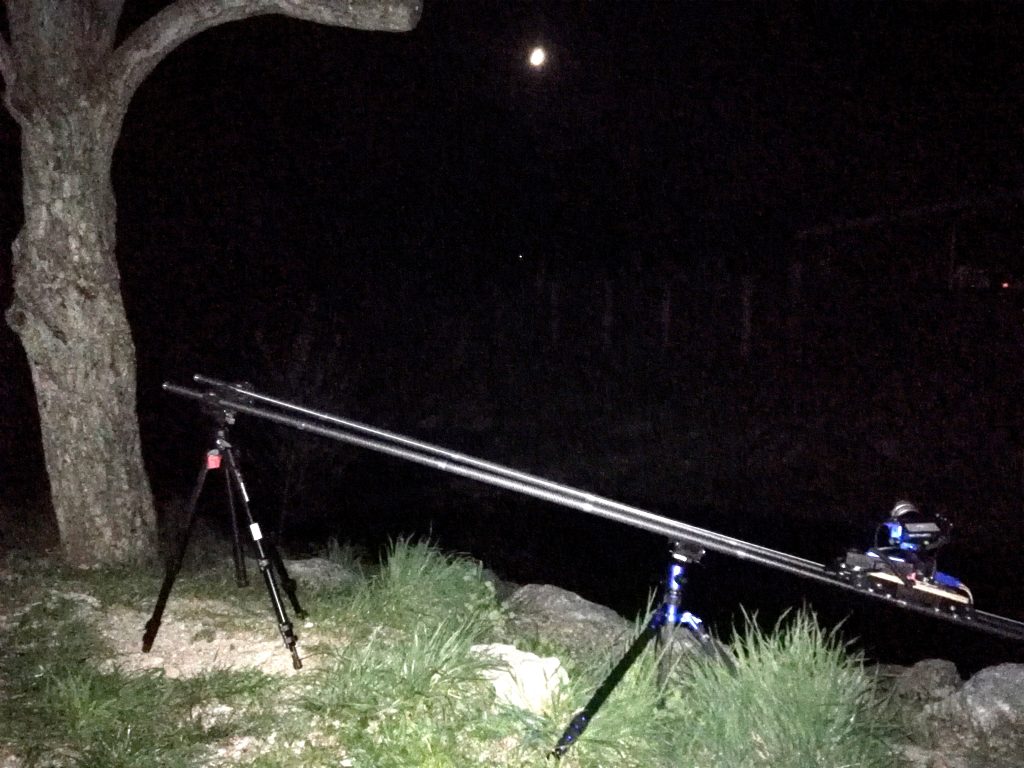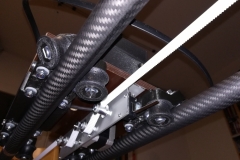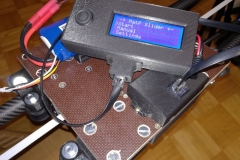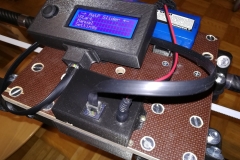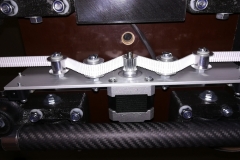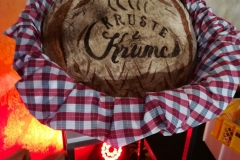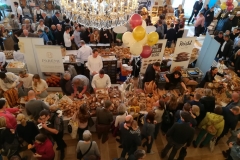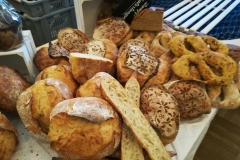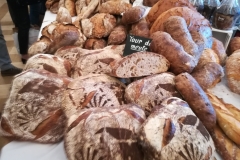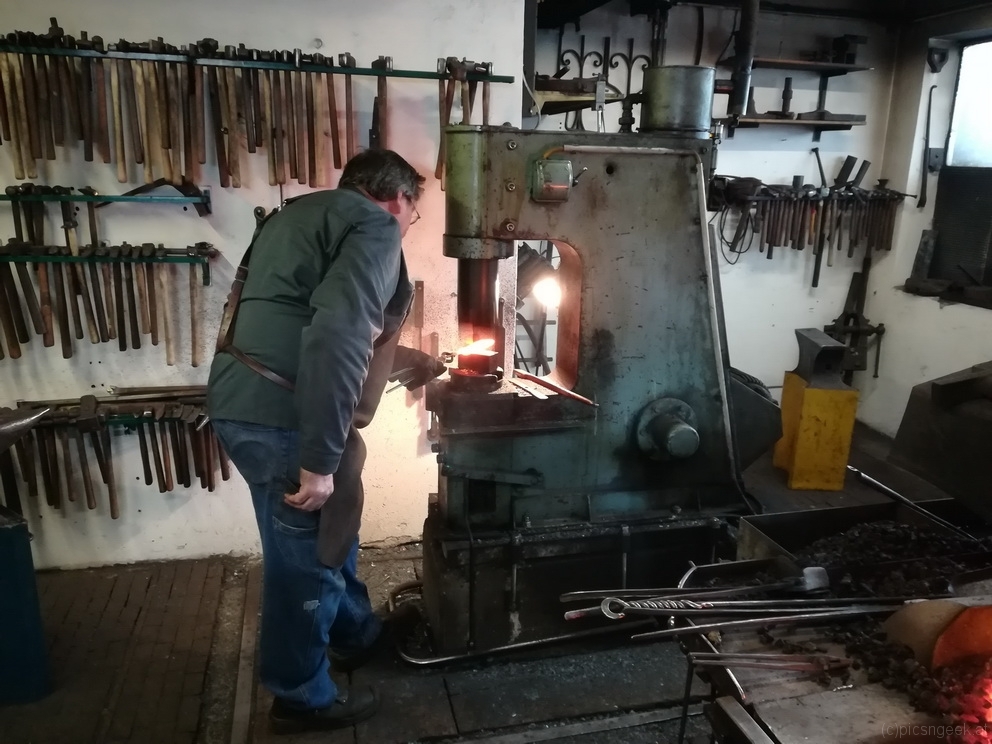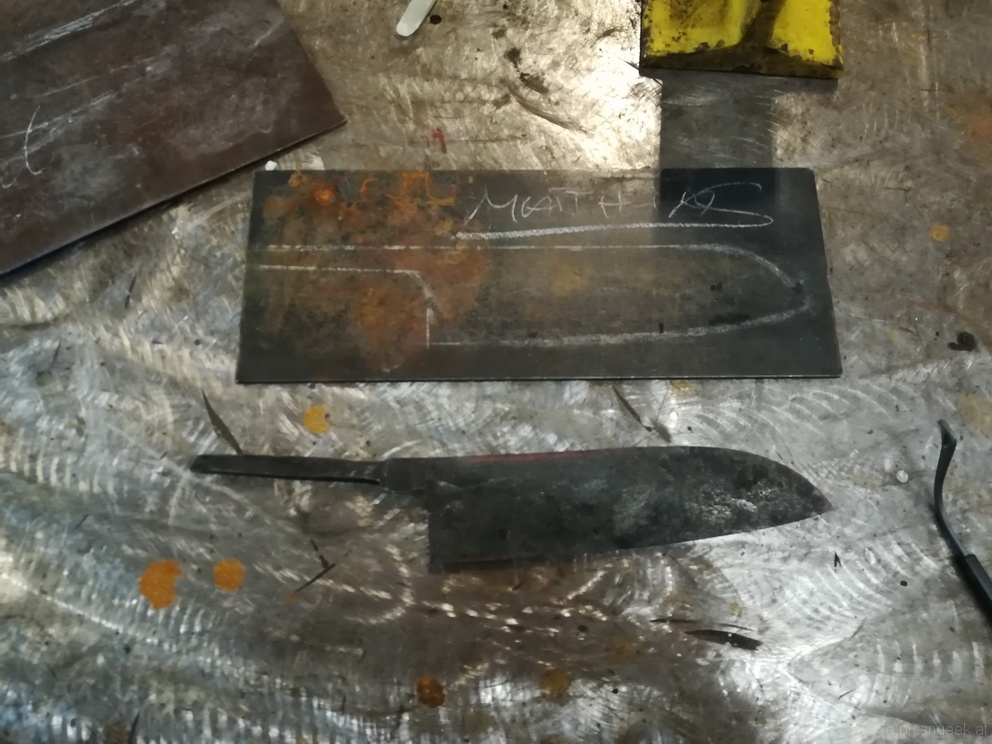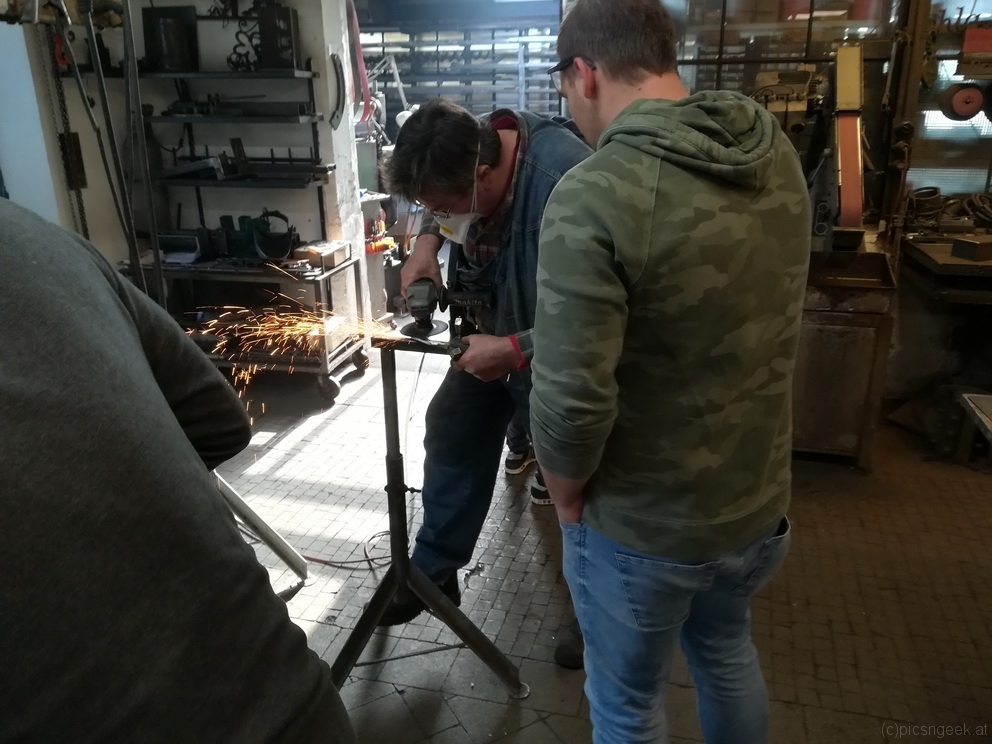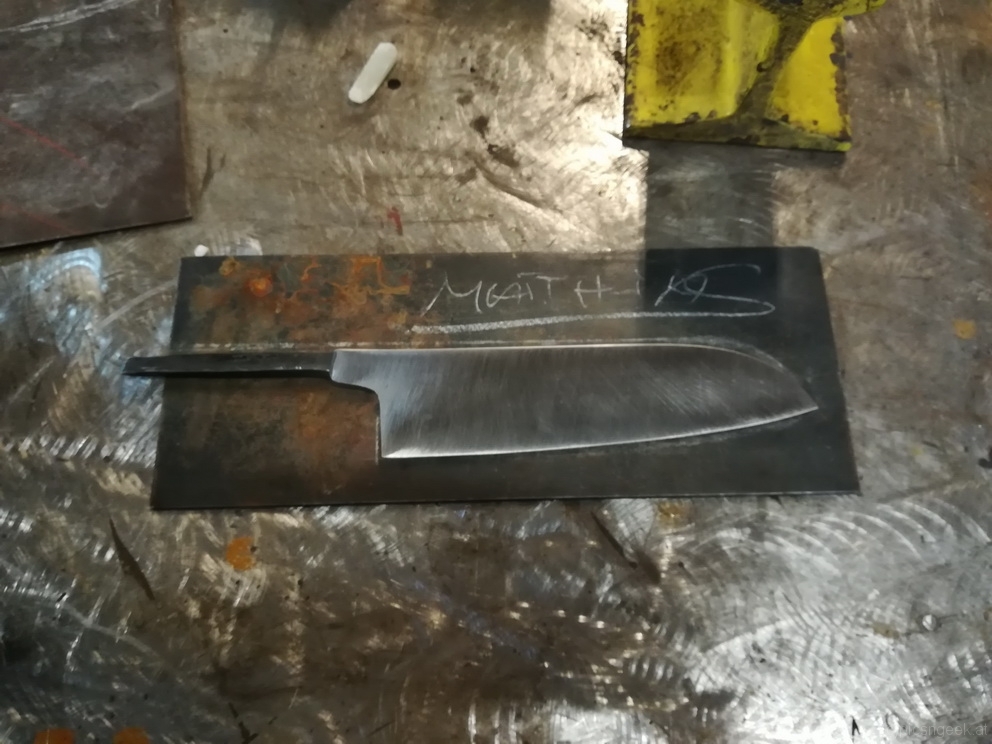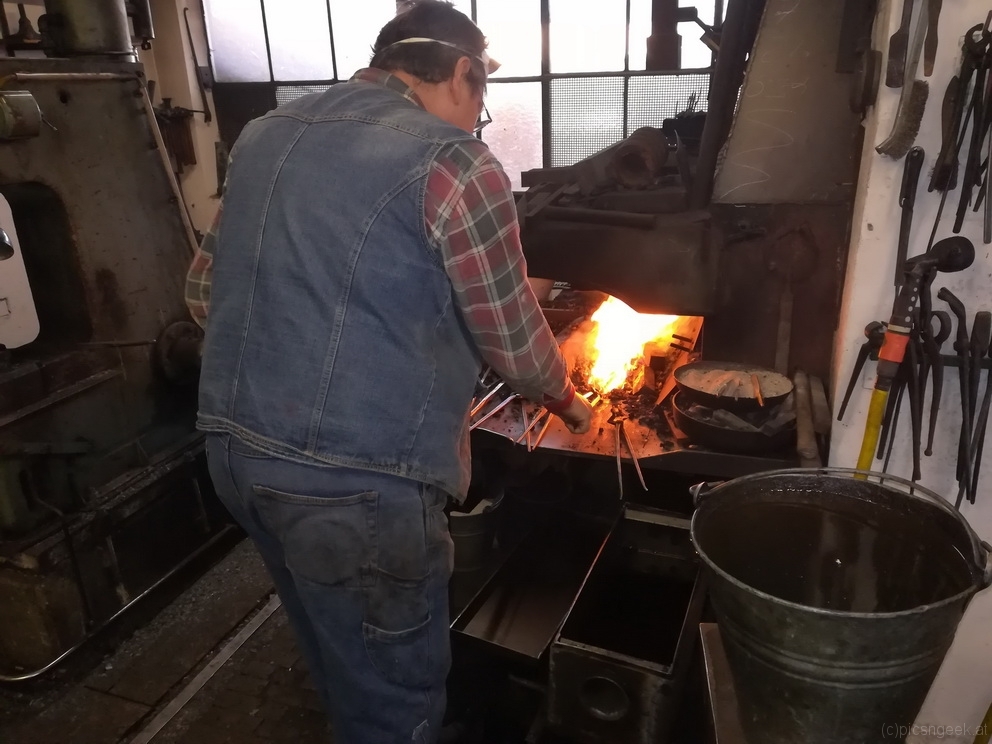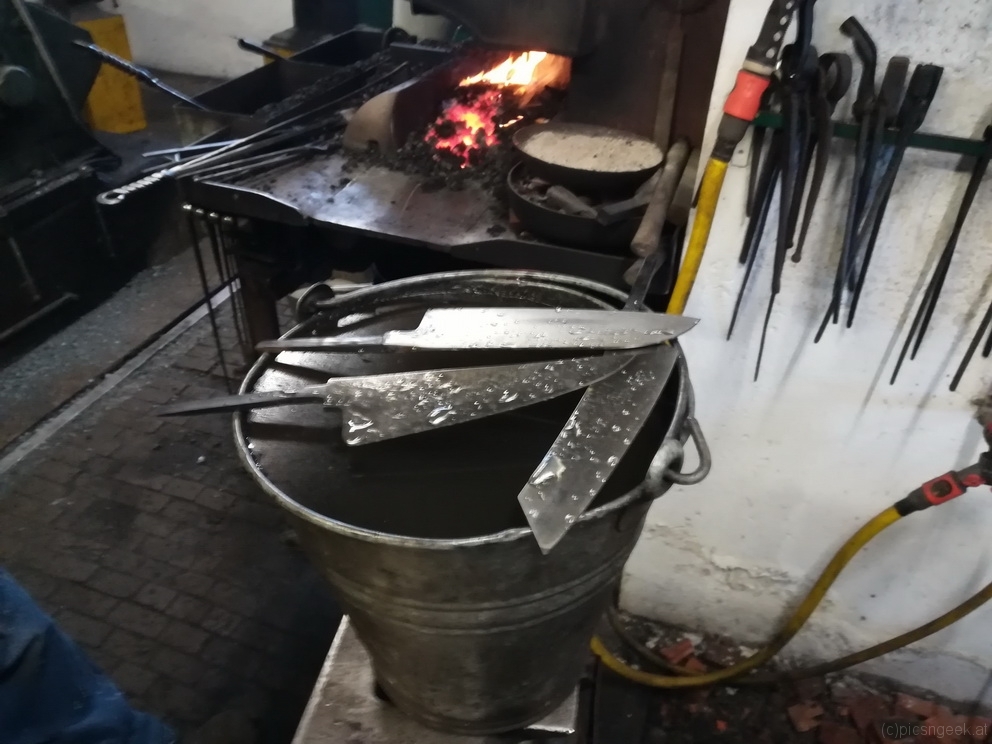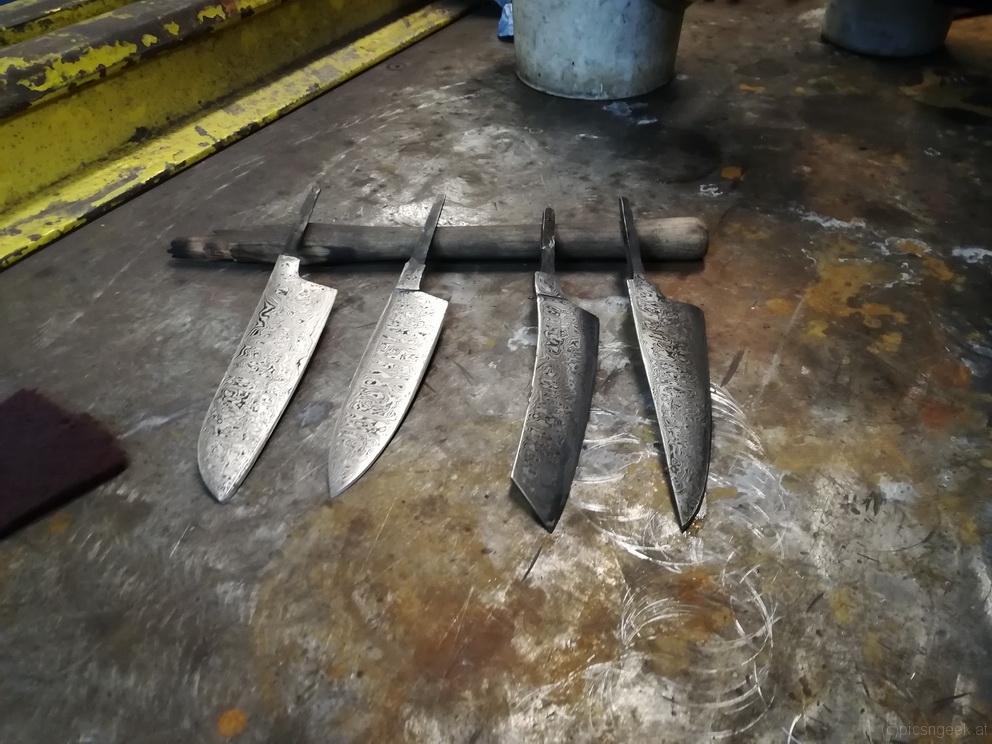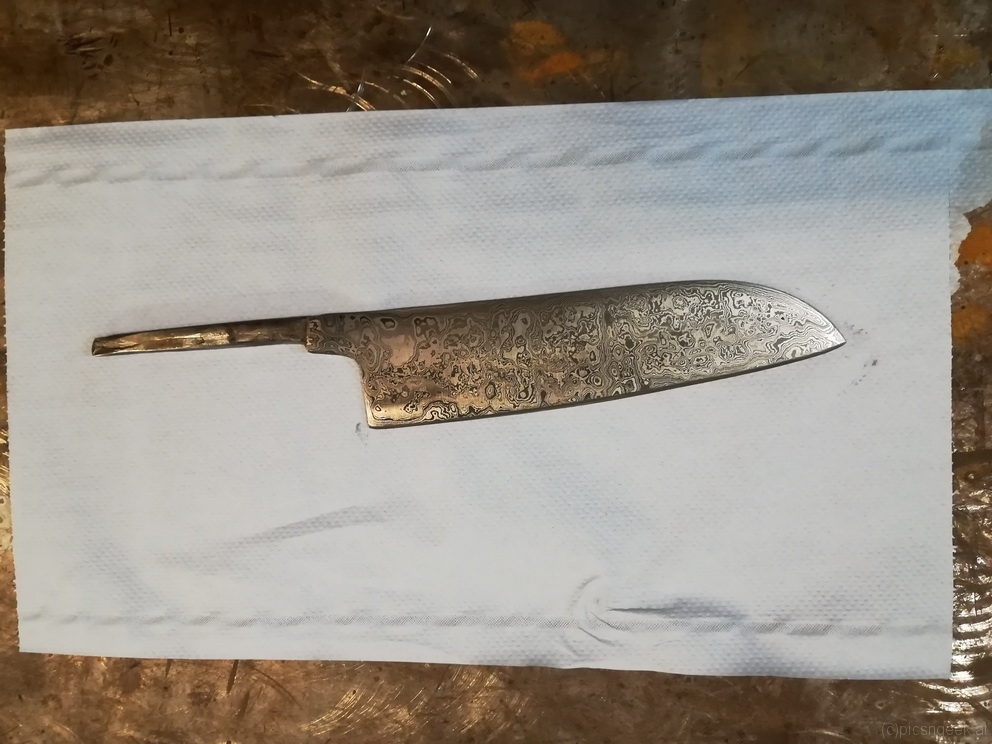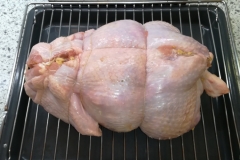Today we spent the day at Herberstein zoo. The weather was just perfectly fine and a few animals did pose well for photos…
Camera slider – night shot with inclined setup
After finishing the slider, I was eager to test the whole thing. To test the capabilities, I went for an inclined setup with 3,5m length and 1m height difference. Well, the footage proofs a good overall performance. But unfortunately the motor is not strong enough to drive the slider cart all too well uphill. OK. The motor is without reduction gear and the motor may drive the slider cart at up to 1,2m/s… So for inclined setups, I have to add a reduction gear / worm gear drive or counter-weight system…
Sequence 1: 10s exposures, going up. Slider stalls due to overload
Sequence 2: 1s exposures at high ISO (it was too late in the night 😉 ), going down
poor quality photo of the setup
Camera slider – build complete :-)
After several hours of designing, 3d printing, drilling, soldering and assembling, my camera slider is ready to use! All components are neatly packed within cases, so that the only wires visible are the power supply from the LiPo battery pack and the shutter release cable to the camera. I have several extensions in mind, like a pan-tilt unit. But for the moment, I will test and use the setup as is. The next improvements will be more on the firmware, for more features: non-linear movement, slow start, slow finish, pre-defined profiles, … for more impressive movies.
Now, concluding the build, I have the following parts in the final setup:
- 12 U-groove wheels, matching the carbon fiber tubes (3D printed plus ball bearings)
- 4 wheel carriages, each holding 3 U-groove wheels (3D printed)
- 1 case for the microcontroller and motor driver (3D printed)
- 1 case for shutter release, power supply and connectors (3D printed)
- 1 hand-controller case (3D printed)
- 1 battery bracket (3D printed)
- 2 end-assemblies (5 parts each, 3D printed)
- 2 supports (3 parts each, 3D printed)
- 1 NEMA17 stepper motor
- 1 A4988 stepper motor driver
- 1 Arduino Nano (Atmel 328 microcontroller)
- 1 4×20 LCD
- 1 Joystick module
- 1 DC-DC converter
- 2 micro switches with long lever as end switches
- GT2 10mm timing belt with wire reinforcement
- 1 GT2 10mm 20 teeth pulley wheel
- 4 GT2 10mm idler wheels
- A whole bunch of M3 to M6 screws and nuts
- 40x3mm flat aluminium
- 30x50x3mm L-shaped aluminium
- carbon fiber tubes
The project was really a fun to make. Even more, the resulting slider provides flexibility and transportability! I may configure the slider in any length, depending on the available tubes. The tubes I use, are 37cm in length and have aluminium screw-in adapters to fit one to the other. I have a bag, which I used as personal item in air travel. The bag holds the complete setup for up to 5 meters (exkluding tripods). The bag weighs in at approximately 5kg – so it is a light weight setup for the length possible.
Camera Slider – first night test
At night, with long(er) exposures, the slider concept to stop for each frame, proofs to be perfect!
A test at night with 10 second single exposures:
Crisp and clear images due to stop-motion. But not yet fluid motion (there seems to be a bug in the motor control).
To be continued 🙂
Camera Slider – first real test
After several days of building and coding, the slider was ready to perform a first real world test. Even if the electronics have not yet been encased (all the wires are going wild around the platform), this was proof of concept…
Damascus knife – building the handle
A few weeks ago, I built a damaskus knife blade (see Damascus knive workshop). Now I finally had time to build the handle. Part of the delay accounted for the decision in material and design of the handle. After some serious research and window shopping, I found the perfect combination I would love to have: desert iron wood and silver.
Desert iron wood is a very dense and hard wood. The core parts have a deep red color with wonderful dark texture. But it is not at all easy to find a piece at reasonable prices. Luckily I found an online store, offering a block of desert iron wood with matching size and texture to my likings.
The bolster shall be like a cap, continuing the shape of the handle. As a material I use sterling silver.
The shape of the handle should become rather minimalistic. Further more, I wanted to have some resemblance to traditional Japanese handles. Therefore I chose a prolongued octagonal shape, which gradually gains a bit in height from the bolster to the end.
To build the handle, I started with the wood. I drilled a hole at the exact position to center the blade. Then I used small files to match the hole with the tang, which has a rectangular shape and is a bit off-centered to the rest of the blade. This was really time consuming, as the desert iron wood clogged the files within a few strokes. But finally, after a few hours of work, I had a perfect fit for the tang. I let approximately 5mm of the tang still protruding the handle, to have more strength in the final assembly by hammering the handle on to the blade.
The next step was to make the recessed front, where the bolster will fit in. I cut a line at exactly 10mm from the front edge. Then I filed away 1mm of wood, as I will use 1mm sheet sterling silver. From a strip of 11mm width I formed a ring with an octagonal shape matching the handle, using parallel pliers. The ring is soldered with hard sterling silver solder. After filing and sanding the edges to have perfectly flat sides, I cut a sheet of silver with a bit of excess border. The ring is soldered to the sheet, again using hard solder. After cleaning and filing away the excess material, I could drill and file the hole for the tang. This again was a bit time consuming, to create a perfect fit…
Finally, I sanded and polished the silver bolster, gave the desert iron wood a last fine sanding. Then I mixed a bit of epoxy with desert iron wood file dust. I added glue to the bolster and into the hole for the tang. So I would have a really strong bonding betreen all the parts. I hammered the bolster to the handle (which was only necessary for the final 2mm). Following immediately I inserted the knifes tang to the handle. Using a rubber hammer, I pushed the tang into the final position within the handle.
Meanwhile I set an oven to approximately 70° Celsius for increased strentgh and faster hardening of the epoxy. After cleaning away any excess epoxy with acetone, I set the whole knife in the oven for curing.
Hint: If there is any epoxy pushed out of the joints during curing, you may use a small soldering iron to work the exopy off the surface. The remaining thin film of epoxy may be removed with acetone. If you are careful, you will most likely have a scratch free surface afterwards!
The last thing to do is a thin coating of hard oil.
After more than 20 hours of work (including forging the blade), the knife is ready 🙂 The final result is a perfectly balanced knife due to the heavy wood handle. The center of balance lies exatly in front of the bolster. The blade will hopefully last for a very long time and provide perfect cuts due to approximately 56-58 HRC.
Motorized camera slider
For quite some time I would like to create night time movies in hyperlapses. For me, the most stunning results may be created by moving the camera along a linear path by the use of motorized sliders. Motorized sliders, which are more than 2 meters long, have an impressive price tag. Further more, these tools are bulky and heavy, especially when the setup attached to weighs in a few kilos.
Therefore I decided to build my own with a few goals in mind:
- light weight
- portable
- variable length
- suitable for a load of a few kilos
- wider range of speeds
- extendable for rotation axis
- direct control for camera(s)
To achieve all or most of these goals, I came up with a design built around carbon fiber tubes with aluminum screw-in fixtures. Appropriate tubes may be built from scratch or are readily available for camera gimbals. I chose the camera gimbal extensions, as there is no big price difference to buying stock material. Further more, they come in a handy size of +/- 40cm in length.
The end supports will have to hold the tubes as well as a gear belt, along which the slider cart will be driven. For long setups, I created supports, to prevent bending and excessive stress to the tubes. Both types of support will have legs as well as tripod mount screw holes (3/8 UNC thread)
The slider cart consists of 4 blocks holding 3 pulley wheels each. The blocks are attached to a base plate (in test setup a plywood sheet). In the middle of the base plate lies the motor unit consisting of a steper motor and 4 guiding wheels to create enough tension for the gear belt to be driven by the motor.
All in all, the shopping list is really limited, as most parts were 3D-printed. What I had to purchase or use (most parts were already to be found in the workshop) was:
- carbon fiber rods (at least 8)
- 24 ball bearings type 626 2RS (6x19x6 mm)
- GT2x10mm belt matching the desired length
- GT2 20 tooth drive gear
- 4 guide wheels without teeth for 10mm belt
- 1 NEMA 14 stepper motor, <3V nominal voltage
- several M5 and M6 screws, washers and nuts
- 3/8 UNC thread taper
- approximately 0.5m of 40x3mm Aluminum sheet
- 25cm of 30x50x3mm Aluminum L shaped profile
- Arduino, Stepper motor controller like A4988, 12-18V (lithium) battery
- 1 can of rubber spray like Plasti-Dip (c)
Most of the time I spent was in CAD constructing the parts. Printing took about 3 days. The pulley wheels have to be sanded for a smooth surface before coating with rubber. The remaining time was spent in cutting, drilling and tapering the aluminum parts, before all parts could be attached together.
The first test run was more than pleasing. See for yourself:
The next thing to do is to create a control box with all the features implemented for every day use 🙂
Kruste & Krume – The Vienna bread festival
When baking your own bread, you get tempted to visit places with bread offerings. This time I visited the “Kruste & Krume” bread festival in Vienna. Located at the wonderful Kursalon Hübner (a Renaissance building from the middle of the 19th century, next to Stadtpark), the festival hosted more than 30 bakeries. Each one offering their portfolio of breads and sweets to purchase or even as samples. During the day, continuous demonstrations and first hand contact to master bakers as well as trainers made the festival a visit worth the time spent.
Damascus knive workshop
Today I could participate in a workshop to create my own damascus knive. With the guidance of the really well experienced smith, I could manage to forge a 189 layer blade out of 7 individual metal strips. (OK – to be honest, the essential parts of the forging were done by Walter, the smith). I am really pleased with the final result – my own kitchen knive in Santoku style…
Turducken? Yes TurDuCken it is!
For new-year’s-eve we are having a couple of friends to celebrate with. The special occasion also requests a special treat. So… For a while I was amazed by the monstrous creation of a turducken, which I wanted to prepare for this evening. You don’t know what a turducken is?
Well, pick a turkey, duck and a chicken and stuff them within each other. Sounds cruel. Well, it is someway. As you start by completely deboning all three birds. Pay attention to leave all the flesh and skin in tac! I also forward the suggestion I read, to remove the skin from the duck – which is or becomes too greasy. Have a good amount of bread stuffing (like from the yummy Thanksgiving roast turkey) ready.
Now, starting with the duck, fill all cavities with stuffing. Close and re-shape the bird. Now place the duck inside (or on top of the opened) chicken. Fill any cavities with stuffing. Again, close and reshape. Finally, place the duck in the chicken inside (or on top of the opened) turkey. Add stuffing and close neatly. Use medium-thick twine to sew the turkey closed. Add some more twine all around for security and fix the drum-sticks as close to the meat as possible.
Now you are ready for roasting – or as I prefer it – low temperature cooking with a final touch of roasting.
My turducken, weighing in approximately 5kg, had a good 8 hours time at 110°C for a juicy and delicious result. *yummy*



